Camera GP2013 Japan
Camera GP2013 outlin
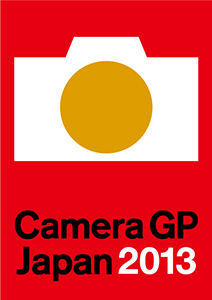
The Camera Grand Prix is held by the Camera Journal Press Club (C.J.P.C. / Japan), and operated by C.J.P.C.’s Camera Grand Prix Executive Committee. C.J.P.C. was established in September 1963, with the purpose of providing its readers with reliable and in-depth stories about the photography industry and photographic equipment. In 2010, C.J.P.C. formed a partnership with TIPA (The Technical Image Press Association), a group of 27 photo and film magazines from 14 countries mainly in Europe, confirming that both groups would collaborate on their awards for mutual development.
The Camera Grand Prix is, since its starting in 1984, considered one of the widely recognized camera awards and a symbolic tribute to the camera industry. For selection of “Camera of the Year,” the best still camera introduced on the Japanese market within the past year, and “Lens of the Year” a category which was established in 2011, a judging committee is involved, which comprises C.J.P.C. members, editorial directors (or publishers) of C.J.P.C. member publications, external committee members outsourced by the Camera Grand Prix executive committee including academic experts, technical writers, professional photographers. This year, a total of 56 individuals voted in the selection of the above awards of the Camera GP 2012. Further, “Readers Award” was selected by general readers’ votes, and “Editors Award” was selected from among all photography-related equipment, judged by C.J.P.C. members. As the above, at present four award categories are provided for the Camera Grand Prix.
Camera of The Year
The award went to the Sony Cyber-shot RX1 (production company : Sony Corporation)
Lens of The Year
The award went to the Sigma 35mm F1.4 DG HSM (production company : SIGMA Corporation) .
Readers Award
The Readers Award went to the Nikon D800E (production company : Nikon Corporation). The award was established in 2008, in celebration of the 25th anniversary of the Camera Grand Prix. The winner is selected by general readers' votes.
Editors Award
As the result of a conference of C.J.P.C. members, the Canon EOS 6D (production company : Canon Inc.) and the Sigma DP1 Merrill / DP2 Merrill / DP3 Merrill(production company : SIGMA Corporation) were selected for Editors Award.
About The Camera GP emblem

The Camera GP emblem is trademark (registration pending) of the C.J.PC (Camera Journalist Press Club of Japan). The use of the emblem is not permitted except for the purpose of creating news articles on the Camera Grand Prix. In that case, however, any alteration or partial use of the mark is not allowed.
【GUIDE LINE】
Color
Use it by the color basically.
Size
Use it by 8mm or more in width.
Others
The ratio in length and breadth cannot be changed/A part alone cannot be used/The color cannot be changed/Other elements cannot be added.
All inquiries
Camera Journal Press Club /JAPAN
Website: http://www.cjpc.jp/
Email: camera-gp@cjpc.jp
The details of awards are as follows
Camera of The Year
Sony Cyber-shot RX1
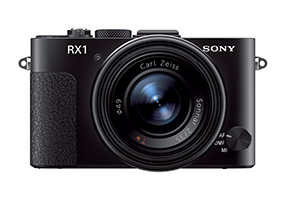
Remarks upon selection
Combining a 35mm full-frame sensor with the specially designed Carl Zeiss Sonnar T* lens in the camera provides high-quality images. The open-minded and innovative characteristics specific to Sony products as well as its impressive existence as the camera to symbolize the “year of 35mm full-frame digital cameras and high-grade compact cameras” are highly evaluated to make a the final determination to give the camera the “Camera Grand Prix 2013 Camera of the Year” prize.
Lens of The Year
Sigma 35mm F1.4 DG HSM
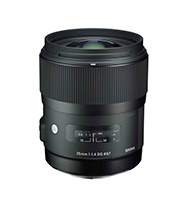
Remarks upon selection
The fast single focal-length lens to fit high-resolution 35mm full-frame DSLRs materializes highly detailed images even at full aperture to capture excellent images even at picture edges. Even though its reasonable price, it contains carefully selected glass materials and metal parts plus a high-grade appearance to satisfy the ownership. Upon considering the above, the “Camera Grand Prix 2013 Lens of the Year is given to the lens make.
Readers Award
Nikon D800E
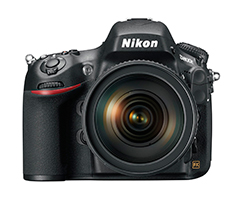
The award was established in 2008, in celebration of the 25th anniversary of the Camera Grand Prix, and the winner products have been selected by the general camera enthusiasts' votes on the web. The Nikon D800E won the majority of the votes. Here are some excerpts from the voters’ comments:
Remarks upon selection
- This is a pioneer of 35mmFF cameras with high-resolution, high-definition, and highly functional features yet at a reasonable price so that even amateurs can afford. I think it fully demonstrates the manufacturer’s best efforts. (male, age 72)
- It offers high reliability and ease of use. It’s a great challenge to neutralize the OLPF. (male, age 53)
- I’ve never experienced such overwhelmingly high resolution like this. Also, the camera creates high-resolution images, even at its high-ISO range. I think it be outstanding. (male, age 37)
- It eliminates an OLPF for the first time for a 35mm FF camera. It is an ambitious try for the renowned camera manufacturer to get rid of an OLPF. (male, age 25)
- It simultaneously realizes high resolution and high sensitivity. Its high resolution exceeds that of the Nikon D4, the top of the line camera. Its basic functions including viewfinder and shutter release and the external texture make me decide to use it for the lifetime.(male, age 22)
- Its overwhelmingly high resolution. When compared with other DSLRs marketed so far, I think this goes one generation beyond. (male, age 30)
- The camera with an outstandingly high resolution by its 36. 3 MP sensor and neutralization of its OLPF is the highest of all 35mm DSLRs. And its reasonable price makes it qualified to be the best camera of the year. (male, age 42)
- The DSLR goes one step ahead toward the next phase that movie cameras cannot reach. (male, age 45)
- The 35mm FF DSLR removing an OLPF to achieve a balance between high sensitivity and high image quality despite its high-resolution feature. It is not only high in resolution but may be used for a variety of purposes. (male, age 20)
- I was astounded that the camera achieved 36.3 MP resolution. Also, the idea of removing an OLPF is innovative. (male, age 30)
Editors Award
Canon EOS 6D

Remarks upon selection
We chose the Canon EOS 6D as the one that opened the door to low-priced 35mm FF DSLRs to benefit many camera enthusiasts to mark the milestone for 35mm FF cameras in 2012. Concurrently, its lightweight compact body and advanced features, including built-in Wi-Fi, were highly evaluated. In acknowledgement of the above features, the Camera Grand Prix 2013 Editors Award goes to this product.
Editors Award
Sigma DP1 Merrill, DP2 Merrill, DP3 Merrill
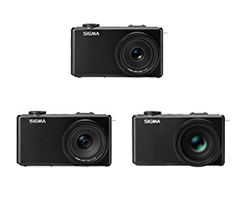
Remarks upon selection
The manufacturer incorporates the Foveon X3 sensor (effective 46 megapixels) of the flagship DSLR SD1 Merrill’s in compact camera bodies of the above three models. Combined with specially designed lenses, these cameras achieved high definition images with quality comparable to medium-format cameras. While many “premium compact” cameras were introduced by camera makers in 2012, Sigma challenged the mainstream by the introduction of these three models by optimizing different view angles and pursuing high quality images with different focal length fixed lenses that no other manufacturer would produce. Upon this achievement, the Camera Grand Prix 2013 Editors Award is given to the above three models.
Camera Journal Press Club/JAPAN
Copyright© 2006-2013 All rights reserved by Camera Journal Press Club
Contact Email:camera-gp@cjpc.jp





